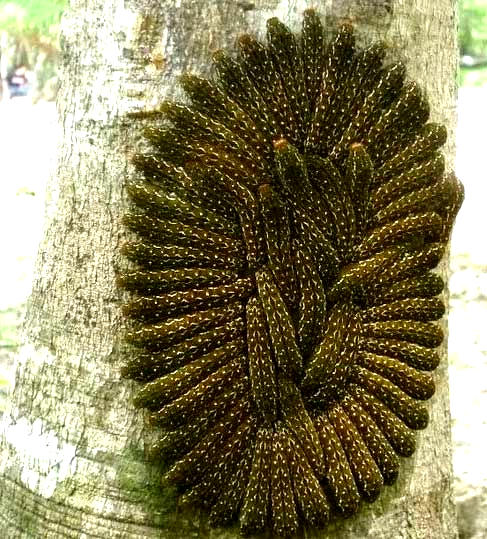Excerpts from Jim Conrad's
Naturalist Newsletter
from the September 19, 2010 Newsletter issued from Hacienda Chichen Resort beside Chichén Itzá Ruins, central Yucatán, MÉXICO; limestone bedrock, elevation ~39m (~128ft), ~N20.676°, ~W88.569°
AMAZING CATERPILLAR PICTURE
Victoria Ciau of the Yucatán was touring Chichén Itzá ruins when she spotted the remarkable thing shown below:

I sent that picture to Dr. Terrence Fitzgerald, a specialist in social caterpillars at the Cortland campus of the State University of New York and he responded:
This is a Papilio, most likely Heraclides (Papilio) anchisiades idaeus. It would appear to be in the second to last instar in a molting aggregation. I have not seen this species in the field but judging by the way they aggregate, it may be a processionary... the caterpillars following each other head to tail.
The butterfly PAPILIO ANCHISIADES IDAEUS is known as the Ruby-spotted Swallowtail, a pretty, black species with large, red spots on the hindwing. I think I've seen them here but haven't photographed them. Several photos, plus caterpillars in other instars, appear on the ButterfliesOfAmerica.Com Ruby-spotted Swallowtail Page.
Why might caterpillars aggregate in this fashion? Several reasons can be thought of, including being part of a collective or cooperative foraging behavior, and thermoregulation, but in this case I'd guess that aggregation mainly serves for group defense against predators and parasites. The number of caterpillars might dissuade some predators, and the pattern created by the massed bodies might confuse others.
Thanks to Vicki Ciau for sharing her picture with us, and Dr. Fitzgerald for the identification.